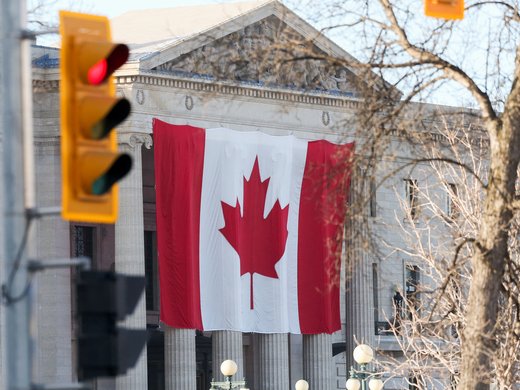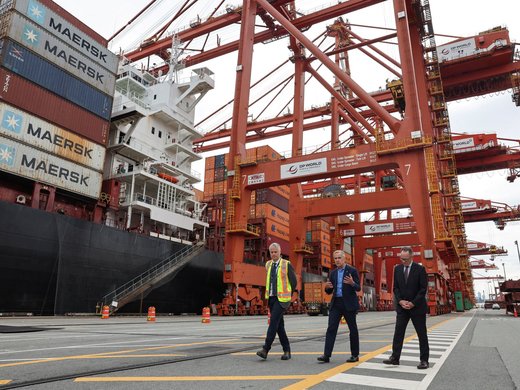What would Chrystia Freeland, the journalist, make of Chrystia Freeland, the cabinet minister? As author of the excellent Plutocrats: The Rise of the New Global Super-Rich and the Fall of Everyone Else, she would probably approve Minister Freeland’s pursuit of a “progressive trade agenda.” But I wonder how she would approach the Trudeau government’s equivocations over the Trans-Pacific Partnership (TPP), the star-crossed trade agreement that former U.S. president Barack Obama hoped would counter China’s economic dominance in Asia.
On January 23, President Donald Trump signed an order that removes the United States from the TPP, leaving the 12-country agreement without an anchor economy. Some aren’t giving up. Australian Prime Minister Malcolm Turnbull said he wanted to save the TPP, and suggested China could be added to make the economics more attractive. Japan seems wary, but hasn’t yet closed the door on the TPP. And Canada? It kept dodging and weaving. “This agreement was so constructed that it can only enter into force with the United States as a ratifying country,” Freeland told reporters after Trump’s announcement. “So the TPP as a deal cannot happen without the United States being a party to it.”
I don’t know Freeland, but back when she was a journalist, I often found myself looking up at her on stage. She frequently conducted public interviews of Very Important People at events sponsored by her former employers in the news business, hosted by think tanks and institutions such as the International Monetary Fund. The reporter I observed then would not accept the vague positions she articulates on the TPP today. The ambivalence of the Trudeau government is odd. The prime ministers and his key ministers talk a lot about tilting Canada towards Asia. While flawed, the TPP would achieve that greater goal. So why the reluctance to embrace it?
One is left with the impression that Trump is dictating Canada’s trade policy at the moment. The received wisdom in Ottawa is that Freeland was promoted from trade to foreign affairs in part because she knows some of the plutocrats in Trump’s inner circle. (She retains responsibility for trade with the U.S.) When Trump quit the TPP, he also said he wants to renegotiate the North American Free Trade Agreement. Everyone assumes Trump’s target is Mexico. So far, Mexico is standing up for itself. Its government said it was prepared to walk away from a bad deal. And on January 26, Mexican President Enrique Peña Nieto cancelled a scheduled meeting with Trump over the U.S. president’s insistence that Mexico would pay for the construction of a wall between their two countries.
The strategy of Canada, as Bloomberg News put it, appears to be to stay out of the way. Last year, Trudeau took Peña Nieto for a run in Ottawa. Now, Canada’s ambassador to the U.S., David MacNaughton, is musing openly about breaking with Mexico to cut a deal with the Trump administration. “It’s essential that we get a better Canada-U.S. trade and economic and security relationship,” MacNaughton told reporters. “Whether that’s within an overall NAFTA arrangement, part of that is going to depend on obviously what Mexico’s reaction is to what they put on the table.”
These are dangerous waters for Trudeau. He campaigned on a vision of Canada as more than an appendage of the U.S. economy. There is growing risk that he will sacrifice that idea to appease the Trump administration. Many experts—perhaps even most of them—will be advising the prime minister, Freeland, and François-Philippe Champagne, the new trade minister, to do whatever is necessary to avoid a nasty Tweet from the president of the United States. Even though Canada benefits greatly from a multilateral trading system, Ottawa has a long history of equating Canada’s national interest with keeping the U.S. border open. Dan Ciuriak, a former deputy chief economist at Canada’s trade department who now is a senior fellow at the Centre for International Governance Innovation (CIGI), notes that if Trump blows up NAFTA, Canada’s trade with the U.S. would be dictated by the terms of their original free-trade agreement from 1989. (Disclosure: I also am a senior fellow at CIGI.) “Canada should not retaliate and help to trigger a trade war,” Ciuriak says in a video recorded for CIGI’s website. “If NAFTA is abrogated, I don’t think this is the end of the world. We still have the Canada-U.S. FTA in place and I think at this point
The notion that Canada should do whatever it takes to placate a president who could be gone in four years reminds me of something: it is the same sort of short-term thinking that kept newspaper publishers from accepting that their future was digital. Now, the news business is such a wreck that serious thought is being given to a government rescue. If the U.S. were to implement a border tax on Mexican imports to pay for Trump’s wall, would it really be in Canada’s interest to say nothing as the other junior partner in NAFTA was so abused? Economic gravity will ensure that the U.S. remains Canada’s primary trading partner. But that’s not where the growth is. If Canada wants to become wealthier, it must exploit the world’s bigger emerging markets—a group that includes Mexico.
Ciuriak also recently published a paper that urges Canada to pursue a free-trade agreement with China. He says the gains would be sizeable, probably greater than what would be achieved through the TPP. “At a time when globalization is being shaken and walls are being built, Canada needs to pursue a strategic vision of breaking down walls,” Ciuriak writes. Here’s the thing: what if that irritates the White House? Eric Miller, a Washington-based trade consultant, thinks Trump is itching for a trade fight with China even more so than Mexico. If that is the case, how might the sight of Trudeau making nice with Beijing be received by Trump and his advisers? “I don’t think now is the time to do a deal with China,” Miller told me in an interview. “Do you really want to start a trade deal with China when Trump is gearing up for a confrontation?”
This brings us back to the much-maligned TPP. When Trudeau and his economic ministers talk about a pivot to Asia, they tend to dream big. They talk about signing bilateral deals with the biggest economies on the continent: China, Japan and India. Miller calls this the “math fallacy,” the idea that because these markets are so rich or so populous, that all you need to do to make money there is gain access. It’s not as simple as that. India isn’t particularly keen to do trade deals with anyone; it is unclear that Japan and Canada complement each other all that well. Miller, who until recently was a senior adviser at the Business Council of Canada, which represents the chief executives of the country’s biggest companies, says Canadians simply don’t know enough about how China works to avoid getting screwed in the fine print of any deal. A free-trade agreement with China is obviously worthwhile, but it will take years to get it right.
What Canada can do in the short term is seek to hit some doubles and triples rather than crank home runs. There are lots of opportunities in second-tier Asian economies, such Vietnam, a TPP country. These are fast-growing markets, but ones with which a middle power such as Canada can deal as an equal, not a demandeur. “Canadians should get ahead of the curve and spend some time in Ho Chi Minh City and find out what is going on there,” Miller said.
A year ago, I would have said confidently that the Trudeau government would be keen on a such a strategy. Now, I’m unsure. I will be watching Trump’s Twitter feed for clues on where Canada’s trade policy goes from here.


